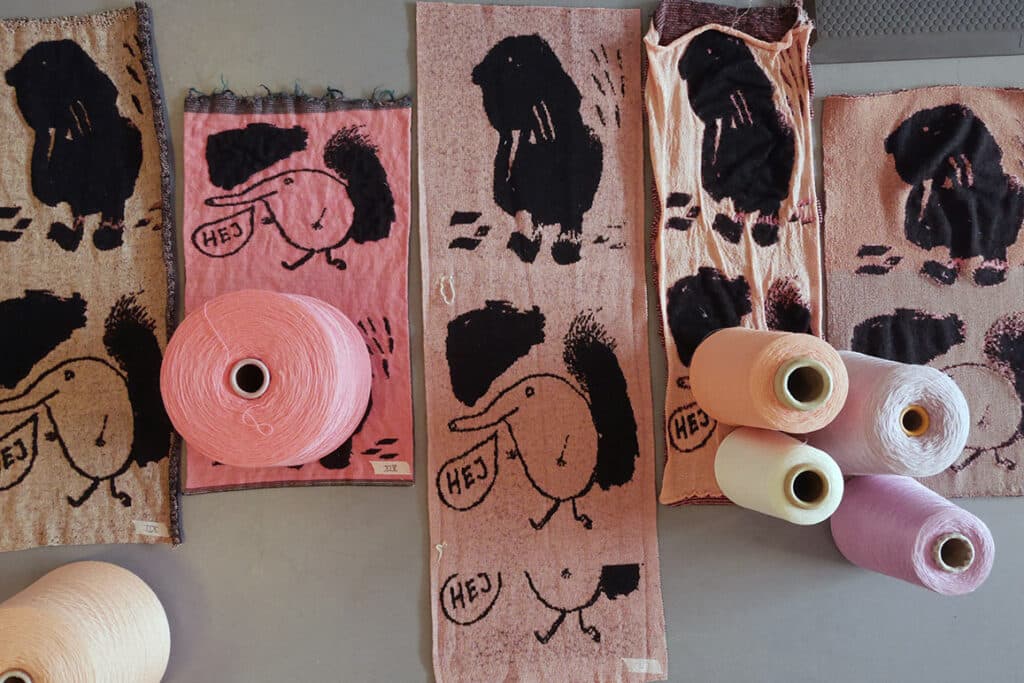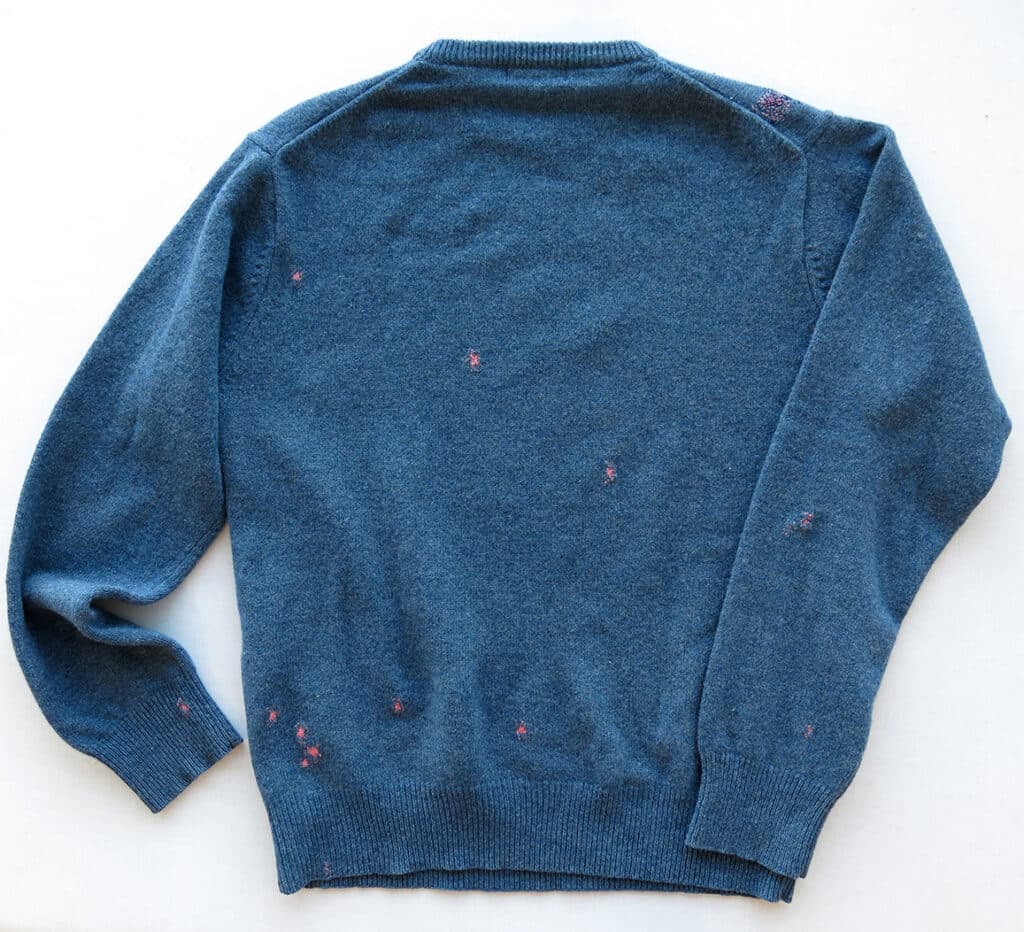Tubular Knits
Summer 2015
The study of Tubular Knits was connected to the research project called VIGGA: Sustainable Clothing for Babies funded by Danish Ministry of Business and Growth. The research project was a collaboration between Design School Kolding, Southern University Denmark, PlanMiljø, and the company Vigga with a business concept that offers a baby clothing subscription service, promoting sustainability through sharing economy. The research studied parents’ conception of the service and fashion within this context as well as laundry habits and reception of the design aesthetics offered by Vigga.
As a part of studying and testing how best to meet the requirements of use, maintenance and ‘shared’ aesthetics by the users of a subscription service, tubular knit patterns were one way to explore textile aesthetics in connection with high-frequency use and longevity. In the study, Vibeke Riisberg, Joy Boutrup and Louise Ravnløkke worked with the assumption that small pattern surfaces could help to camouflage stains and signs of wear. In a circular subscription service such as Vigga’s, baby clothes are in constant circulation between families. To keep the garment in active use for as long as possible, the study aimed to explore ways in which textile design could contribute to the system. As part of this, the study sat out to develop a selection of signature knit designs that could be included in Vigga’s collection of baby clothes.
The purpose of the study is to develop textile qualities and aesthetics that;
- are easy to handle in production, both in knitting and in the process of sewing garments.
- suitable for many washes, by reducing the appearance of pilling.
- reduces the purchase of yarns / optimizes the possibilities when purchasing a few yarns.
- makes VIGGA stand out on the market through design innovation.
Tubular knits are quick and easily available in production. Before starting the exploration of Tubular Knits, Vigga already had tubular knit qualities in their clothing collection, such as single jersey, and thereby had contact with a manufacturer. Tubular knits were therefore the starting point for the exploration of textile qualities and aesthetics.
Based on the above objectives, three types of knitting have been selected: pique, interlock and rigel. The knitting technical qualities have in common to provide many pattern options in a simple production form:
- Pique, a classic stitch technique in tubular knit. The knit has a structure/pattern texture with tuck stitches, which in combination with colour change/yarn change offers opportunities for many pattern options in a simple production form.
- Interlock, is an elastic type of tubular knit. The appearance of interlock knits is the same on both sides of the material, which also means that the edge does not roll and is therefore easy to handle in the process of sewing. Likewise, interlock knits do not twist and allow for many pattern options. As the technique knits on every other needle, the technique may give a melange look when including more colours/yarns.
- Rigel, is a light and elastic type of tubular knit. The knit is the same on both sides, which means that the edge does not roll and is therefore easy to handle in the process of sewing garments. Moreover, the rigel knits technique has high productivity using less yarn compared to the above. The construction of stitches allows for pattern options in smaller stripes.
The series of experiments are carried out by Louise in collaboration with knitting technicians with experience from industrial production, Jesper Hvisthule from Skovhus Strik and Tommy Martinsson from Swedish School of Textiles.
The experimental series uses five different colours/yarns, of which a maximum of four yarn colours were used for the same sample. The small patterning appears by changing yarns cones in different colours with different positions in the production system of the knitting machine. These experiments are developed on knitting machines with 16 systems. Knitting machines that have more systems, which is generally the case in the industry, pattern reports may be longer and even more complex in expression.
Related Sources
Project overview: https://www.designskolenkolding.dk/projekter/vigga-sustainable-clothing-babiesConference: https://www.designskolenkolding.dk/kalender/vigga-konference
Project insights: https://www.designskolenkolding.dk/node/1981


